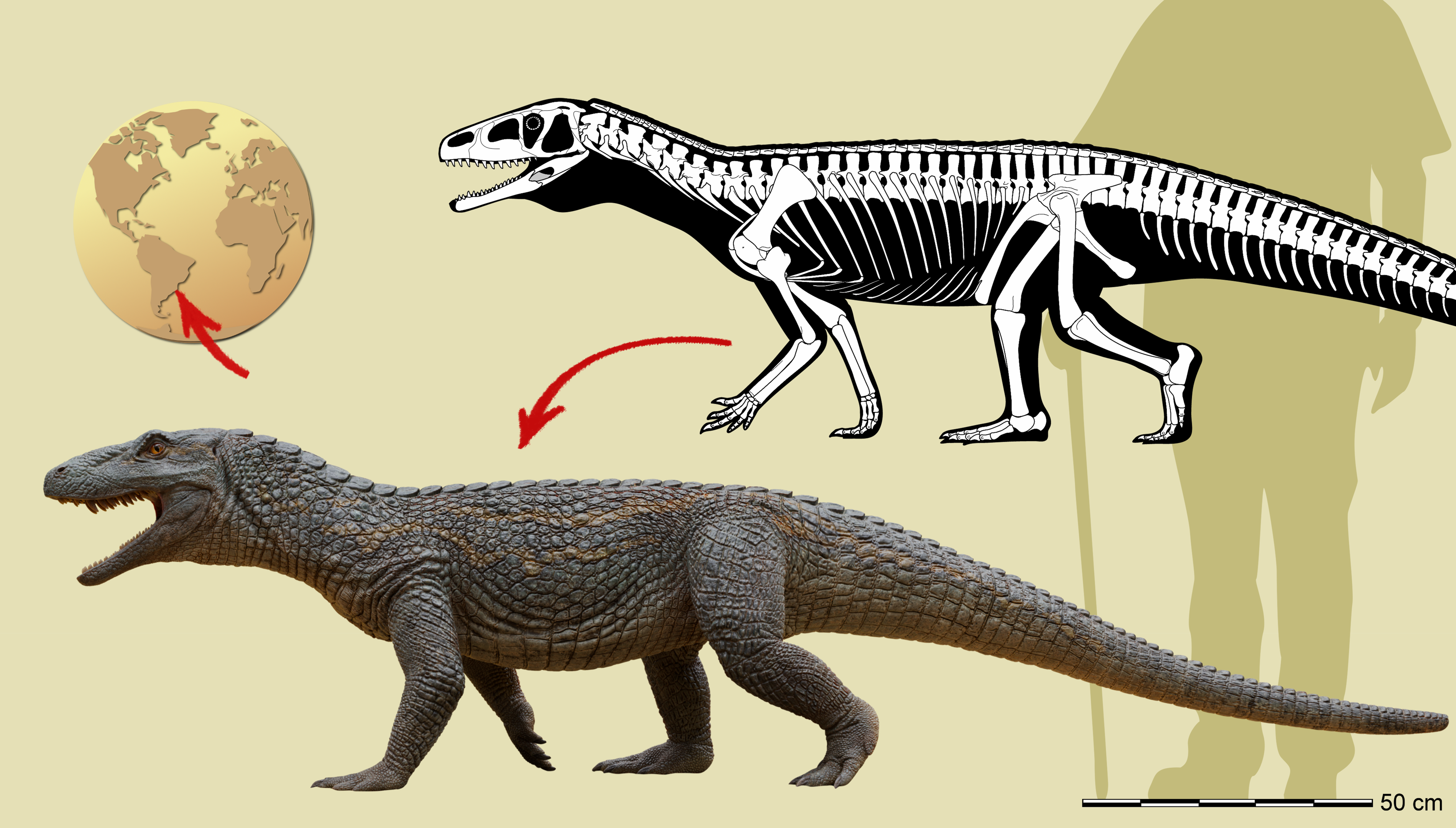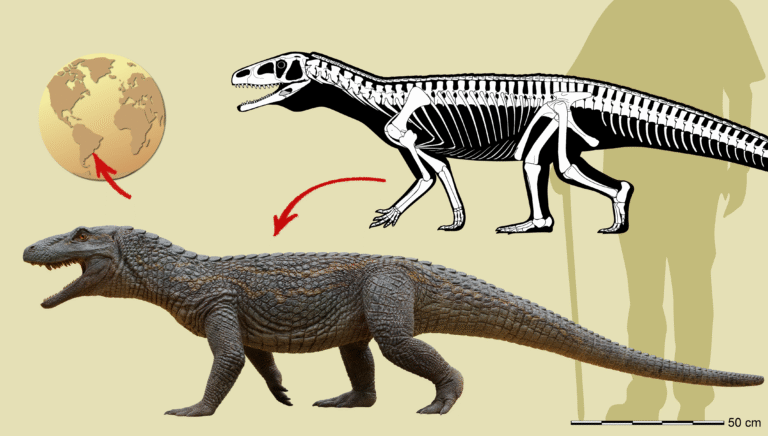Researchers have unearthed a giant “warrior” lizard that stalked Brazil 240 million years ago in the Triassic period, just before the dawn of the dinosaurs. The discovery fills in gaps in our understanding of the time before the dinosaurs dominated Earth, and further highlights the links between what is now Africa and South America.
The armor-plated reptile resembles a dinosaur but is actually an ancestor of modern crocodiles. Scientists have called the creature Tainrakuasuchus bellator, which is a mixture of Greek, Latin and Indigenous Brazilian language Guarani, meaning “pointed-tooth warrior crocodile.” The team revealed its findings in a study published in the Journal of Systematic Palaeontology on Nov. 13.
“Its discovery helps illuminate a key moment in the history of life, the period that preceded the rise of the dinosaurs,” study lead author Rodrigo Temp Müller, a paleontologist at the Federal University of Santa Maria in Brazil, said in a statement.
During the Triassic (252 million to 201 million years ago), Archosaurs dominated the world of land-based vertebrates — the name means “ruling reptiles” — and is split into two main groups. One group, Ornithosuchia, evolved into birds and dinosaurs, while the other, Pseudosuchia, gave rise to crocodilians, such as modern crocodiles.

T. bellator belongs to Pseudosuchia. It was about 7.9 feet (2.4 meters) long and weighed 130 pounds (60 kilograms). It had a long neck and thin jaw full of sharp teeth. Very few of these types of Pseudosuchia (called poposauroids) have been found in South America, the researchers noted.
The team found the partial skeleton of T. bellator, including the lower jaw, backbone and pelvis, during an excavation in May in the Dona Francisca municipality in Brazil.
The reptile’s back was covered in bony plates called osteoderms, which modern crocodiles also have.
“This animal was an active predator, but despite its relatively large size, it was far from the largest hunter of its time, with the same ecosystem home to giants as big as seven meters [23 feet] long,” said Müller, who led the team of palaeontologists that excavated T. bellator. “Despite the diversity of pseudosuchians, they remain poorly understood.” Fossils of some of their lineages, such as poposauroids, are “extremely rare” in the fossil record, he said.
T. bellator is closely related to another individual discovered in Tanzania, he said. Mandasuchus tanyauchen, discovered in 1933, lived about 245 million years ago, when Africa and South America were both part of the supercontinent Pangea.
“At that time, the continents were still united, which allowed the free dispersal of organisms across regions that are now separated by oceans,” Müller said. “As a result, the faunas of Brazil and Africa shared several common elements, reflecting an intertwined evolutionary and ecological history.”


